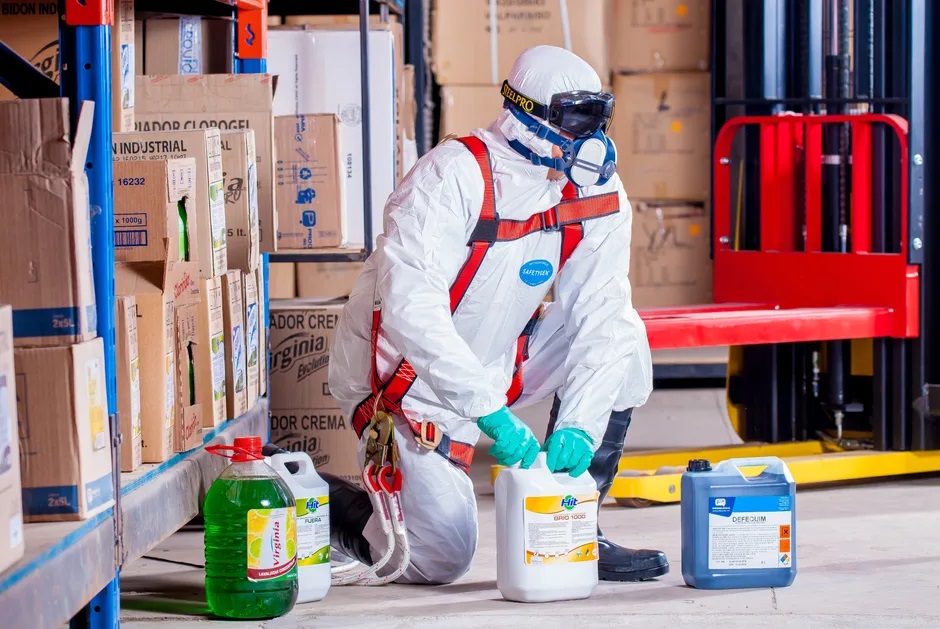Most workplaces have to deal with chemical safety in some way. Chemical plants may have to handle thousands of chemicals a day.
Even technicians working in beauty salons are in contact with plenty of hazardous substances like glues, polishes, and removers.
As such, chemical safety is a concern in most workplaces. But with so much data surrounding chemicals, how’s it possible to keep track?
That’s where safety data sheets come in. And to manage chemicals, you need SDS management, short for safety data sheet management.
In this article, we’ll discuss what SDSs are and what SDS management is.
What Are Safety Data Sheets (SDS)?
An SDS is a standardized document providing in-depth and detailed information about the hazards of a chemical or mixture. It comes with instructions on how to deal with those hazards or respond to an accident.
The SDS is there to answer ‘What is this substance’ and ‘What do I need to do to stay safe?’ It’s the best source of information for anyone who wants to learn about the chemical product.
The SDS is created to share information with anyone who may come into contact with the chemical substance, whether it’s the end-user, medical staff, or emergency responders. There’s plenty of technical information in an SDS that the average person isn’t going to understand, but anyone can usually understand the real core information.
It’s important to know that an SDS does not offer workplace-specific instructions. The supplier provides the information, but any employer needs to take the information and learn how to apply it in their workplace based on how the substance is being used, what mitigation measures are available, and how they want to protect their staff members.
An SDS includes the following 16 sections:
- Material identification
- Hazard(s) identification
- Composition information
- First-aid measures
- Firefighting measures
- Accidental release measures
- Handling and storage
- Exposure controls and personal protection
- Physical and chemical properties
- Stability and reactivity
- Toxicological information
- Ecological information
- Disposal considerations
- Transport information
- Regulatory information
- Other information
What Is the Purpose of an SDS and Who Needs It?
An SDS offers enough information so employers can take the necessary measures to protect staff members. There are over 150 million chemicals in existence, and no one can understand every single one’s properties and hazards.
If your workplace contains hazardous products and substances, you need SDSs. How many you need depends on your business. While some work environments have 50 sheets, others have more than 50,000.
Typically, you require an SDS for any chemical substance present in the workplace classified as ‘hazardous’ under applicable regulations and isn’t exempt from the requirements. Once you find a chemical that meets certain criteria, you need to make or create an SDS for it.
Not sure where to begin? The answer is easy.
You can source the document you require from the same place you found the chemical itself. Chemical suppliers are legally required to provide an accurate and complete SDS for every hazardous substance they produce or import, and many make their SDSs accessible online.
However, if your organization produces the chemicals, then it’s your responsibility to create an SDS that describes it to practice best workplace safety.
Why Are SDSs Important?
Without SDSs, the Globally Harmonized System of Classification and Labelling of Chemicals (or GHS) doesn’t have a dependable way to ensure that data about a chemical is available to the receiver of that chemical. The details must be written down; otherwise, they’ll be lost.
There is so much information that it would never fit on a container label. That’s why a longer document is required.
Additionally, to make that document helpful, it must have a logical and consistent format. That’s why the SDS is an essential part of the GHS system.
The SDS closes the gap between suppliers and recipients. It also bridges the gap between classification and labeling. They’re important because they offer the only way for people to learn and understand the potential hazards and dangers to workers and the planet.
There are too many chemicals out there that we don’t understand. Some substances you can smell but aren’t dangerous. While others you can’t smell, yet are dangerous.
Sometimes, the hazard only occurs under certain conditions. These are all things anyone dealing with chemical substances should know.
What Is SDS Management?
Careful management of your safety data sheet (SDS) is important for many people, including your staff members and clients. Under the GHS, chemical manufacturers and distributors must manage and maintain SDSs for every chemical product to communicate any physical, health, or environmental hazards.
To manage your SDSs, it’s worth investing in a high-quality and comprehensive SDS management platform to safeguard against any compliance gaps in your communication plan. An automated solution can organize, digitize, centralize, and archive your whole collection of SDSs with a user-friendly interface featuring data protection security.
With a great SDS management platform, you can have full control over your whole SDS library to help with your hazard management, including your own SDSs, supplier SDSs, any SDS revisions, and multiple drafts. Most platforms offer secure and unique staff log in features, so employees only view the data relevant to their duties and chemical exposure risks.
SDS management tools are also typically created with the strictest data quality controls, ensuring that your business complies with the GHS’s strict accuracy standards.
Are You Ready to Choose an SDS Management Platform?
If you’re dealing with chemical substances in your workplace, choosing an SDS management platform will help significantly in the way you handle your SDSs.
Even the smallest details matter when it comes to communicating chemical substances and hazards in your workplace, and a quality SDS management platform ensures that nothing slips through the cracks.
If you’re looking for an online SDS management system, we’re here to help. Learn more about our services now.


